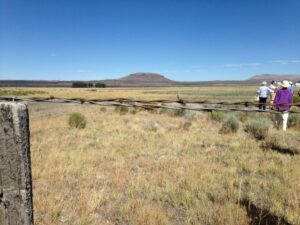By KIRSTEN LASKEY
Los Alamos Daily Post
kirsten@ladailypost.com
With its charter approved and members selected, the Racial Equity, and Inclusivity Task Force can now get to work.
Los Alamos County Council unanimously approved the task force’s charter and appointed nine individuals to serve on the task force during its regular meeting March 30.
Task force members include:
Lisabeth Lueninghoener;
Ashley Naughton;
James Hall;
Erin Green;
John Nash;
Oral Saulters;
James Hogue;
Kenneth Lee; and
David Holtkamp.
According to the staff report, the task force will operate for one year and report to the Los Alamos County Council on “developing and recommending how the County can promote equity, inclusivity and feeling of belonging to the benefit of all and the betterment of the community”.
The staff report also outlined specific goals for the task force:Hone an overall perspective of racial equity and inclusivity;
Communicate with Los Alamos Public Schools, Los Alamos National Laboratory, Los Alamos Police Department, Los Alamos Fire Department, Los Alamos Medical Center, Los Alamos County Community Services Department and local youth and services providers as well as the general community;
Identify best practices to promote racial, inclusivity and a feeling of belonging;
Engage regional leaders;
Understand where the County has discretion to advance racial equity and inclusivity such as policies, budget allocations and program allocations;
Understand how the County can align itself into the Governor’s Advisory Council on Racial Justice;
Draft a vision and mission statement; and
Propose near term actions.
The task force also may reach out to the public to form subcommittees to gather additional input.
Councilors Sara Scott and David Izraelevitz worked on the charter. Scott commended residents Tina DeYoe, Michael Adams and My-Linh Luong for their contributions to the task force. She also applauded all 12 individuals who applied to serve on the task force.
“All I can say is wow regarding the applicants … I just want everybody to know how much we appreciate them taking the time to apply … all these folks, in addition to bringing their own perspectives, are committed to reaching throughout the community for other perspectives …,” Scott said.
DeYoe praised council for forming this task force, but expressed disappointment that the one young person who applied to be a member was not selected.
“This work will improve the quality of life for all our community, especially those who identify as black, indigenous and persons of color,” DeYoe said, adding, “… I am really concerned that the one youth that applied wasn’t even considered as a knowledgeable applicant for this task force.”
It is disappointing because young people took an active role in leading many Black Lives Matter demonstrations last summer and even held a public conversation with the police chief, DeYoe said. By not nominating a young person to the task force she said it seems the council is saying young people are not a priority and do not have anything valid to say.
In other business, County Emergency Manager Beverley Simpson provided an update on COVID-19 cases in Los Alamos and the vaccination effort.
The number of positive cases of COVID-19 remain steady at 499, Simpson reported March 30 (now 501). She added that there has been six deaths and 461 recoveries in Los Alamos County. The number of COVID-19 tests now totals 21,046 – up by 24.
As far as COVID-19 vaccinations, the numbers also are climbing, Simpsons said.
“Our cumulative doses have increased significantly,” she said. “We are actually sitting at 50.7 percent of individuals vaccinated in our county.”
In fact, as far as doses per population, Los Alamos is the highest in the state and higher than the state’s average as of March 30, Simpsons said.
The number of individuals registered for the vaccine increased to 1,086; “that is very good for our county,” she said.
Simpson also said that individuals 75 years and older can now schedule vaccine appointments without an event code. Additionally, phase 2 of the vaccination process – which includes all members of the public – opens mid-April.
This comes with a challenge because Simpson said Los Alamos County currently only has the Moderna vaccine and therefore she needs to find out how many 16 to 18 year olds have registered so a large-scale Pfizer vaccination clinic can be planned. This large-scale clinic could potentially utilize the National Guard and the Department of Health.
So far, Simpson said 50.3 percent of eligible individuals have received their first dose of the vaccine. To vaccinate everyone in town Simpson said the County needs 4,407 vaccines to at least give everyone their first dose.
Simpson praised Nambe Drugs in the vaccination effort. She said Nambe Drugs has performed the most vaccinations – 5,642.
“They are a rock star, and they are a joy to work with … every single clinic has been smooth,” she said.
Simpson also reported that Los Alamos Medical Center has administered 689 vaccinations and Medical Associates of Northern New Mexico, which was just approved to administer the vaccine, has been performing 10 vaccinations a day for a total of 90. Los Alamos Fire Department has now been approved to administer vaccines for home-bound individuals, she said. Vaccination clinics are being held every Monday in April and each one is expected to serve 650-700 individuals.
Los Alamos County also received a report from Los Alamos Wildland Division Chief Kelly Sterna about this year’s wildfire season.
With last year’s less than average monsoon season and snowpack, Sterna said the fire department is apprehensive this year. Additionally, there is the factor of the 10-year burn cycles for large wildfires near Los Alamos, he said, pointing out that Los Alamos is approaching the 10-year anniversary of the Las Conchas Fire and the 21-year anniversary of the Cerro Grande Fire.
“We see this historical pattern pop up very 10-11 years, so we want to make sure we are definitely prepping our folks and local agencies with what we are doing,” he said.
As far as wildland season preparation, Sterna said every year LAFD goes through RT-30, a wildland refresher and a fitness test. He added that all the wildland apparatuses are inspected. Additionally, LAFD meets with LANL wildland management, the U.S. Forest Service and local partners.
Sterna said LAFD will ask council during the upcoming budget hearings to consider approving an annual budget of $50,000-$70,000 for fuels reduction/mitigation activities.
“What we really want to try to focus on is this cycle of mitigation,” Sterna said. “If you don’t get into those areas and retreat every three-five years we run the risk of vegetation over growing and possibly invasive species coming into those areas …”
It is important to open forests’ canopies, he explained. A healthy forest has 30-50 trees per acre but what is being seen right now is 100-200 trees an acre.




